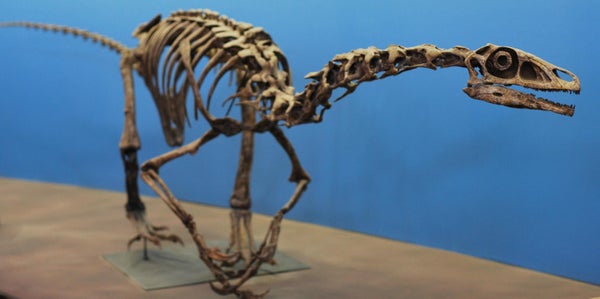This article was published in Scientific American’s former blog network and reflects the views of the author, not necessarily those of Scientific American
Dinosaur nests are hard to find. Prehistoric conditions had to be just right to quickly cover egg clutches without destroying them, not to mention the good fortune it requires to stumble across one of these Mesozoic time capsules just as it’s starting to come out of the ground. And while a single egg or nest is still cause for fossil joy, the discovery of an entire nesting ground is so much better. That’s just what Kohei Tanaka and a team of ten colleagues have just described from the Late Cretaceous rock of Mongolia.
Paleontologists have found sites containing multiple dinosaur nests before. The hard part is determining what these places can tell us about the behavior of extinct species – whether the nests were all deposited at the same time or over multiple seasons, for example. That information isn’t obvious from the nests themselves but is contained in the geologic context. And it’s those clues that led Tanaka and colleagues to conclude that a collection of 15 egg clutches in the Gobi Desert represent a true nesting colony.
For starters, the researchers note, the egg clutches at the Javkhlant nesting site are all found in the same geologic layer, the individuals eggs became infilled with sediment the same way, and were covered up the same way. Each of these nests was laid about the same time during the same nesting season, meaning this was a place were dinosaurs congregated to nest.
On supporting science journalism
If you're enjoying this article, consider supporting our award-winning journalism by subscribing. By purchasing a subscription you are helping to ensure the future of impactful stories about the discoveries and ideas shaping our world today.
But there’s more. The egg clutches weren’t encompassed in mounds or obvious bowls of dug earth. This indicates that the eggs were probably buried or otherwise covered. Furthermore, looking at the number of eggs that apparently hatched in each nest, the paleontologists estimate that these dinosaurs had a 60% hatching rate. That’s a pretty good number, and seems consistent with living birds and crocodiles who actively tend their nests. These dinosaurs looked after their broods.
The question is what sort of dinosaur laid these eggs. No bones are reported from the site that resolve the issue. Perhaps a future find, such as an egg with embryonic bones, could help reveal the dinosaurs’ identity. But, from egg shape and other finds, the paleontologists hypothesize that these eggs belonged to non-avian theropods, most likely some sort of therizinosaur.
The nests underscore the fact that many traits we think of as special in modern birds evolved long, long ago among non-avian dinosaurs. Dinosaurs pioneered feathers, complex respiratory systems that included systems of air sacs, and, as revealed by the Javkhlant nests, communal nesting behavior where parents looked after their eggs. Whether it's penguins or swallows, when you see an avian nesting colony you're looking at Mesozoic behavior.
